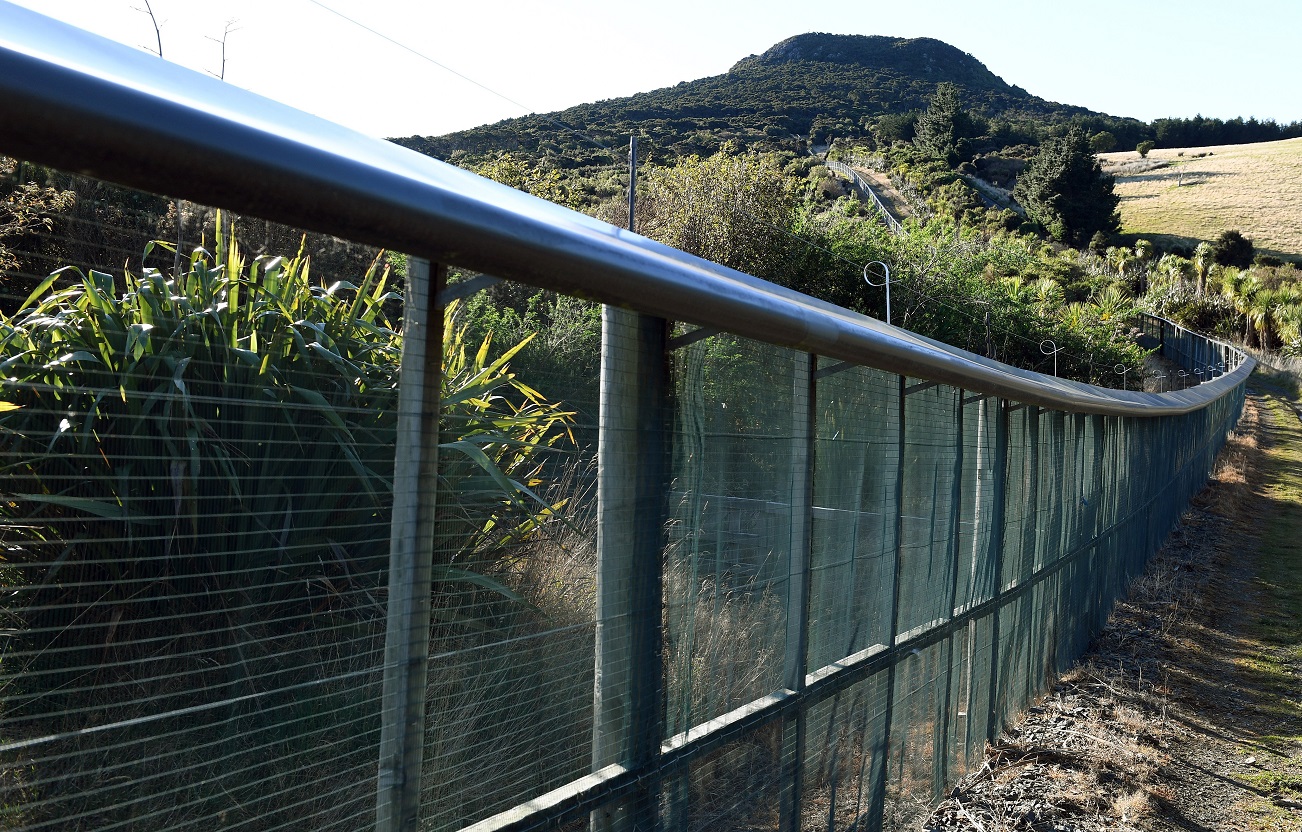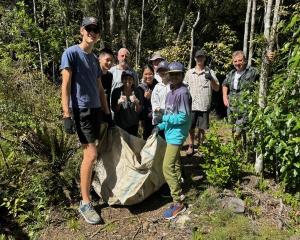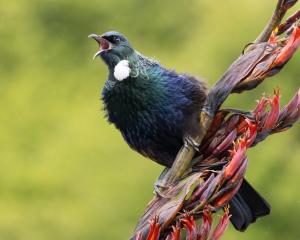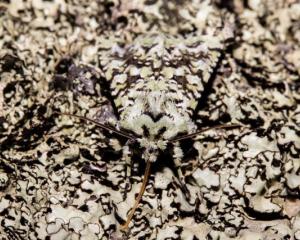

Ship rats have gained access into the sanctuary seven times, stoats three times, weasels and rabbits once. Mice re-established within a year of the sanctuary fence closing and are now practically impossible to eradicate. The only introduced mammals that haven’t gained access back into Orokonui are pigs, goats, possums, ferrets, hares and cats. For that much we can be very grateful. The improvement in Orokonui’s forest cover without the damage done by pigs, goats, hares and possums has been remarkable. The revegetation carried out on the upper sanctuary has been able to thrive without the hares and rabbits, and the understorey in the kanuka forest, once virtually absent, now stands tall. Without cats the lizard population has visibly increased. And the numbers of reintroduced bird species such as kākā and kakaruai/robins are a daily delight. But the effectiveness of the fence is nevertheless imperfect.
Fences are just fences after all. Initially there were design flaws that allowed at least mice back in. Then there were environmental challenges such as floods and strong winds damaging the fence and causing breaches. The most interesting and devastating breach occurred in 2015 when snow froze on top of the fence, slipped downwards and created kilometres of ice bridge. We think that this is one way that stoats gained access. Water is the greatest threat to our fence. Culverts get blocked and overflow onto the fence, slips come down and the water gates can be jammed open. Water gates open with water flow but sticks and rocks can get stuck and when the water subsides a significant breach is exposed. Norway rats and stoats are expert swimmers and can possibly breach the water gates, even with decent water flow.
Severe wind can also be a problem, but thankfully larger trees that could fall onto the fence were felled before it went up. Unlike other fenced sanctuaries, we have not yet had a large tree collapse onto it. Generally, incursions don’t cause too much damage to biodiversity, if you detect the incursion quickly and deal with invaders in a timely manner. However, if you don’t, then the consequences can be dire indeed. We found this out in 2015 when at least four stoats gained access into the sanctuary, and one called Orokonui home for about 10 months. During this time the entire population of tīeke, estimated at about 46 in February 2015, disappeared within a few months. Tīeke cannot coexist with stoats in any circumstances. Several breeding female kākā disappeared too.
So how do we end an incursion? It generally comes down to some skill, a lot of resources, good eradication devices and, sometimes, just old-fashioned luck. An incursion can end very quickly if you are lucky. There are permanently set traps and bait stations inside the fence and an invading rodent or stoat may just go straight into one. However, that is often not the case and in the case of the stoats in 2015 it took many months, experimental traps and lures and, in the end, a stoat-trained dog and some very good luck.
Unfortunately, incursions will remain a fenced sanctuary fact of life for the foreseeable future. New Zealand is still early in its predator free journey. We have seen some local progress with the excellent Halo project that was initially established after the 2015 stoat incursions. The original goal of the Halo project was to take pressure off the fence from invading stoats. Orokonui Ecosanctuary is now surrounded by many thousands of hectares of best practice stoat and possum control and all the hard mahi is starting to pay off. Orokonui established a trap line around the outside of the fence in 2012 and averaged more than 20 stoats captured every year up until the Halo project started. Since then, the stoat capture has dramatically decreased, and we now catch only a couple per year. What this means is that when the fence is breached, we are very unlikely to leak a stoat.
However, the same can’t be said of ship rats and they are clearly on the increase. Unfortunately, an expected outcome when stoats are suppressed. One rat isn’t much of a problem, unless it happens to be a pregnant female. So, every fence breach and incursion is a potential disaster in the making.
We may never eliminate incursion risk entirely; however we can learn from the past to make future events less likely to be problematic. Over the years we have learnt the strengths and weaknesses of our fence and processes, fine tuning these to the very placement of traps to give us the best chance of any future incursions being as brief and innocuous as possible. While our team are now relative experts in caring for our fence and responding to incursions, preparing for and responding to these events is costly. In 2022 more than $200,000 from Otago Regional Council, Lottery Environment and Heritage and Otago Community Trust was raised to do fence remediation work, allowing the fence to better cope with extreme weather events. Even a brief rat incursion earlier this year cost close to $10,000 of staff time, equipment and the use of specialist dog teams. In other words, financial support from our sponsors, and donations, memberships and other support from the community are just as important to keeping our wildlife safe as any meter of fence is.
The ultimate goal is that one day many of the species within Orokonui may thrive throughout the city, but for now they rely on the predator free nature of the sanctuary to survive. All thanks to a few millimeters of wire mesh, and a huge amount of dedicated work to keep that fence standing strong.
Elton Smith has been operations manager at Orokonui Ecosanctuary since 2006.












